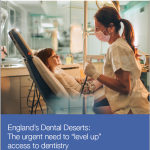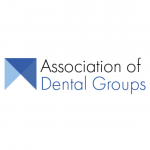The ADG has a launched a new report today highlighting the parts of England at most risk of becoming “dental deserts” without government action.
The pamphlet also includes new data obtained on the number of dentists undertaking NHS activity which reveals a further fall of over 2,000 from the March 2021 figure of 23,733[1]. ADG research and a Freedom of Information request[2] on workforce activity in January 2022 indicates a fall of 2,000 dentists in England undertaking NHS work this year, the lowest number for a decade. Without addressing this workforce crisis, the backlog in care is unlikely to be recovered and “dental deserts” in England will continue to grow.
Last year, NHS data[3] showed that the Top 10 parts of England with the lowest number of NHS dentists per 100,000 of population were:
North Lincolnshire CCG 32 NHS dentists (per 100,000 population)
North East Lincolnshire CCG 37 NHS dentists
East Riding of Yorkshire CCG 37 NHS dentists
Lincolnshire CCG 38 NHS dentists
Norfolk & Waveney CCG 38 NHS dentists
North Staffordshire CCG 40 NHS dentists
Portsmouth CCG 42 NHS dentists
Halton CCG 42 NHS dentists
Stoke on Trent CCG 43 NHS dentists
NE London CCG 43 NHS dentists
Other areas of the country struggling to provide access to NHS dentistry in the “Top 20” include the Isle of Wight, Cornwall, Thurrock in Essex and Kent and the Medway towns.
With a joint foreword by Peter Aldous, MP for Waveney who represents one of the hardest hit parts of the country and ADG Chair Neil Carmichael, the paper proposes “six to fix” policy recommendations for Government to solve the crisis in access to dentistry in its pamphlet.
Neil Carmichael, Chair of the ADG, said: “Dental deserts not only stretch across the whole of the East of England from East Yorkshire, through Lincolnshire and down to Norfolk but are now emerging in many other ‘red wall’ constituencies that the Government wishes to ‘level up’.
“Our fears of an exodus from NHS dentistry are proving to be founded and the number of NHS dentists working in England is now at the lowest level for a decade.
“We welcome the Government’s commitment to reform of the recruitment and registration of overseas dentists – what needs to follow is NHS dental contract reform and investment in our future domestic workforce – only when this happens will we have a chance of tackling the oral health inequalities of England.”
References:
[1] NHS Dental Statistics for England – 2020-21 Annual Report – NHS Digital
[2] FOI 23376 – Datasets – Open Data Portal BETA (nhsbsa.net)
[3] NHS Dental Statistics for England – 2020-21 Annual Report – NHS Digital Annexe 2 Table 2A








